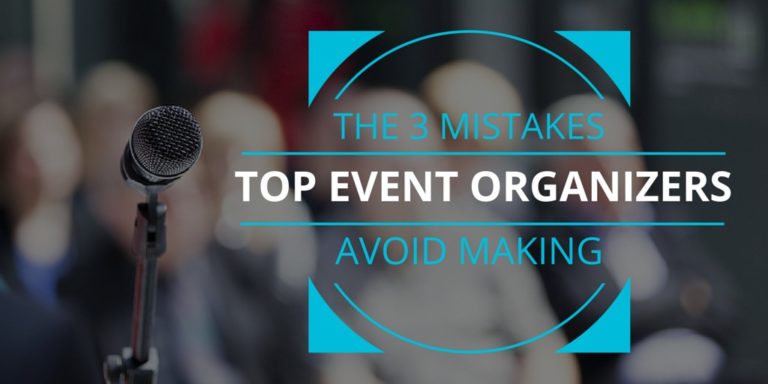You’re organizing an event. Maybe it’s an entertainment event or a fitness challenge. You’ve got your venue booked, your caterer on board, and your marketing campaign underway. But have you considered incorporating micro events into your event management plan?
Whether you’re planning an in-person gathering, a virtual, or a hybrid event, adding micro event ideas to your marketing toolbox is an excellent way to future-proof your event promotion strategies. Not only are mini events more intimate and personal, but they also reduce the strain on your resources and fit into a more compact timeline.
Read on to learn more about micro events and why they are such a valuable asset for event planners today.
What Are Micro Events?
Today’s event industry is more competitive than ever before. With so many options for personal development, entertainment, and fun, capturing people’s attention and getting them excited about your event can be challenging.
One way to rise above the noise and create an event that people will remember is to focus on creating smaller, more intimate experiences, also called micro events. These events are designed to be personal and engaging, focusing on quality over quantity. They serve the same purpose as traditional events but can be executed in a more compact timeline. And because they are smaller in scale, micro event ideas tend to be less expensive to put into practice.
Moreover, micro events can be physical or virtual, making them even more versatile. In-person micro events include:
- Art gallery openings
- Small-scale pod concerts
- Pop-up shops
- Fitness challenges
Examples of online micro events are:
- Facebook Live events
- Online trivia nights
- Digital scavenger hunts
- Motivational webinars
What they have in common is that they are all designed to be personal and engaging (e.g., through limited ticket availability, a VIP experience, a short duration, or exclusive access to content).
How to Incorporate Micro Events Into Your Event Plan
The opportunity to create an intimate, personal experience is one of the main reasons why micro events have become such a popular marketing tool. But how can you ensure that your future events will meet this expectation? And what’s the best way to incorporate micro events into your event management strategy?
To answer these questions, here are three useful tips.
Ensure the Setting Is Personal and Simple
Whether you’re planning small annual events or one-time gatherings, the most successful micro events are those that feel personal. To create this intimate feeling, you must ensure that the micro event space is simple but adequate. This could mean using a small, character-rich venue or transforming a space in your office. The key to success is that the event feels like it was designed just for your guests, and not as an afterthought.
Moreover, you can limit the number of attendees to make sure everyone has a chance to interact and connect. Creating personal connections is one of the best ways to make your event unforgettable.
Keep Time Deadlines Short and Strict
When it comes to micro events, time is of the essence. Because these events are designed to be intimate, the event timeline should be short and strict. So if you’re hosting a virtual event like an online workshop, for instance, make sure it’s no longer than an hour or two.
Having clear start and end times for your event is also essential. This will help ensure that guests know what to expect and can make the most of their time. And most importantly, setting strict deadlines will help you stay under budget and avoid exceeding your allotted time and resources.
Break Up a Larger Event Into Smaller Pieces
Another requirement for successful mini events is focusing on a specific topic or activity. You can do this by breaking up a large-scale event into smaller pieces. For example, suppose you’re hosting a cultural event like a film festival. In that case, you could create smaller events around different aspects of the festival, such as film screenings, question-and-answer sessions with directors, or meet-and-greets with actors.
Let’s take a closer look at what this could mean in the specific case of entertainment events compared with fitness challenges, for instance.
Entertainment and Social Media Events
To create memorable micro events in the entertainment space, you need to focus on the guest experience. This means creating events that are engaging and interactive for the attendees. For example, live concerts could incorporate events within events by offering VIP experiences such as backstage tours or meet-and-greets with the artists.
To break up a virtual social media event into smaller pieces, keep the platform’s capabilities in mind. This means creating content and activities that are interactive. You could host a Twitter chat or Facebook Live session as part of a more extended social media event, giving people the opportunity to connect on different occasions.
Fitness Challenges
Fitness events have a different dynamic from entertainment and social media events, as the focus is more so on the individual challenge than the group experience. However, there are still ways to break down a larger challenge into smaller pieces to make your event more versatile and engaging for participants. A city-wide marathon, for example, can be divided into a series of smaller challenges, such as a 5K or 10K race, manageable for different fitness levels.
Another way to create micro fitness events is to offer different challenges on different days. For example, you could have a cycling day, a running day, and a hiking day as part of a big fitness event. No matter your reason for hosting a virtual challenge or the type of fitness challenge you choose, Events.com has the software that can help you make your event epic. The Events.com EveryChallenge® platform offers a one-stop-shop to sell tickets, secure sponsorships, market your event, display virtual results, and much more. For more information about EveryChallenge® or to start planning your virtual fitness challenge, visit Events.com today.
Why Is the Micro Event Model Effective?
There are several reasons why the micro event model is effective. From a practical perspective, small-scale events can be easier to organize because they require less time, less effort, and fewer resources. But this doesn’t mean they are less impactful on those who attend.
So let’s start with this participant-centric focus and explore four reasons why micro events benefit your overall strategy.
1. Improve Attendee Engagement and Participation
The first reason why small-scale events are an excellent element to include in your event management plan is that they improve attendee engagement and participation. This is because the personal nature of these events encourages attendees to get involved and interact with one another, which creates a sense of community among them.
Small social media events allow attendees to connect with one another on a more personal level, which can lead to improved relationships and increased collaboration. To create an engaging virtual event experience, you could, for example:
- Book virtual booths
- Host breakout sessions
- Offer on-demand chats
2. Appeal to the Audience’s Short Attention Span
Another reason why micro events are so beneficial to your target audience is that they appeal to people’s increasingly short attention spans. In a world where we are constantly bombarded with information and distractions, staying focused on anything for a prolonged period can be difficult.
Micro events are the perfect solution to this problem, as they are designed to be concise and snappy, making them easy for people to digest. As a consequence, your audience is more likely to pay attention to and remember the key points from your event.
3. Ensure Quality and Connection Building Over Quantity
Moreover, smaller events ensure quality over quantity, which is essential for meaningful connections. When you host a large-scale event, it can be difficult to give each attendee the attention they deserve. As a result, some people feel like they are just a number, which can make them disengaged and uninterested in your event.
Mini events, by contrast, offer a more intimate setting in which meaningful connections can be made. This is because there are fewer people to interact with, making it easier for event attendees to engage with one another on a personal level.
4. Reduce Costs Compared to Large-Scale Events
Incorporating micro events into your event management plan also directly affects you as an event organizer. One of the most significant advantages is that they tend to be more cost-effective than large-scale events.
This is because small events require fewer resources, such as venue space, staff, and marketing materials. They also tend to have shorter timelines, which helps reduce the overall cost of the event. And the best thing about them, as mentioned above, is that you don’t have to sacrifice quality or impact in order to save money. Micro events offer visitors the same benefits as bigger ones, but at a fraction of the cost.
Host Events of All Sizes With Event Planning Software
The micro event model is an effective way to improve attendee engagement, build meaningful connections, prioritize quality over quantity, and thus reduce costs. It is suitable for physical, virtual, and hybrid events, and you can easily incorporate it into your event strategy by offering small-scale events or breaking down larger events into smaller experiences.
At Events.com, we help you successfully execute your event, no matter its size. Our powerful event management software and experienced customer service team will support you every step of the way. Contact us today to learn more about how our event technology can help you host events of all sizes with absolute confidence, ease, and success.




